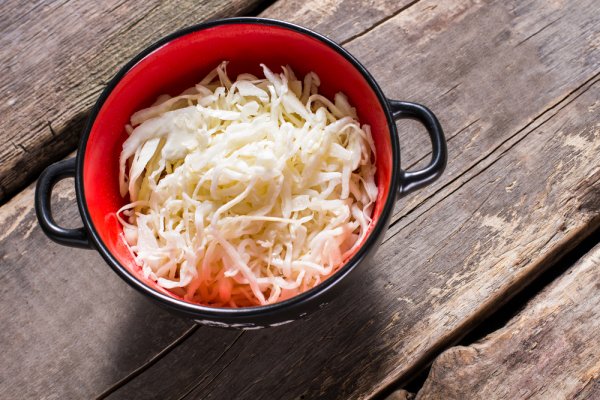Sauerkraut
The German influence on Namibian cuisine is strong, resulting from Namibia being a German colony from 1884 until the conclusion of World War I. The existence in Namibia of the traditionally German sauerkraut is particularly reflective of this influence. Made of shredded cabbage that is salted and allowed to ferment in its own juice, sauerkraut is eaten as a side dish and sometimes as a condiment on meats and sandwiches. Recipe Serving: Serves 8
Prep Time
25 minutes
+ 3 minutes resting
+ 3 minutes resting
Cook Time
15 minutes
Total Time
43 minutes
Vegetarian
Vegan
Gluten Free
Dairy Free
Kosher
Halal
Ingredients
- 5 lb (2.25 kg) cabbage, shredded
- 3 tbsp (45 ml) salt
Directions
- Mix cabbage and salt with hands and pack gently into a stone crock or plastic bucket.
- Cover with cloth, place a heavy lid over the container and leave to cure at a temperature of 75°F (24°C) for 3 weeks.
- Remove scum as it forms and regularly wash cloth to prevent mold growth.
- Check often to see if there is enough liquid and top it off with weak brine—2 tbsp (30 ml) salt in 1 qt (1 l) of water—if it gets dry.
- Store in refrigerator.
Notes
Carrots, apples, berries, and spices may be added to the fermentation mixture for enhanced flavor.Copyright © 1993—2025 World Trade Press. All rights reserved.

 Germany
Germany 